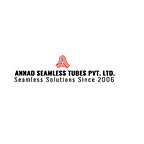Types of Heat Exchanger Tube Cleaning Methods
Heat exchanger tubes play a crucial role in various industries, facilitating the efficient exchange of heat between two fluids. Over time, these tubes can accumulate deposits such as scale, corrosion, and fouling, reducing their efficiency and lifespan. To maintain optimal performance, it’s essential to regularly clean the tubes. In this article, we’ll explore different methods for cleaning heat exchanger tubes, helping businesses operating in various industries understand their options for maintaining their equipment.
Mechanical Cleaning:
Mechanical cleaning methods involve physically removing deposits from heat exchanger tubes. This approach is effective for removing tough deposits such as scale and sediment. Some common mechanical cleaning methods include:
- Brushing: Using brushes or scrapers to physically scrub the interior surfaces of the tubes dislodges and removes deposits. Brushing can be done manually or with automated brush systems, depending on the size and accessibility of the tubes.
- Scraping: Similar to brushing, scraping involves using tools to scrape away deposits from the tube surfaces. Scraping tools may include handheld scrapers or automated scraping systems.
- Pigging: Pigging involves inserting a specialized cleaning device, known as a pig, into the tubes. The pig travels through the tubes, pushing deposits ahead of it and cleaning the interior surfaces effectively. Pigging is particularly useful for long or complex tube systems.
Chemical Cleaning:
Chemical cleaning methods utilize chemicals to dissolve or loosen deposits from the interior surfaces of heat exchanger tubes. This approach is effective for removing organic and inorganic deposits without the need for extensive manual labour. Some common chemical cleaning methods include:
- Acid Cleaning: Acidic solutions, such as hydrochloric acid or citric acid, are circulated through the tubes to dissolve scale, rust, and other deposits. Acid cleaning requires proper safety precautions and may require neutralization after use to prevent damage to the equipment.
- Alkaline Cleaning: Alkaline solutions, such as caustic soda or potassium hydroxide, are used to break down organic deposits and grease inside the tubes. Alkaline cleaning is effective for removing oily residues and biofilms.
- Solvent Cleaning: Solvent-based cleaners are used to dissolve and remove specific types of deposits, such as oil, grease, or resin. Solvent cleaning is often used in conjunction with other cleaning methods for targeted removal of stubborn deposits.
High-Pressure Water Jetting:
High-pressure water jetting employs pressurized water streams to remove deposits from heat exchanger tubes. This method is particularly effective for eliminating soft deposits and biofilms without the need for chemicals or mechanical abrasion. High-pressure water jetting can be combined with other cleaning methods for enhanced effectiveness.
Ultrasonic Cleaning:
This type of cleaning uses high-frequency sound waves to agitate cleaning solutions, creating microscopic bubbles that implode and dislodge deposits from the tube surfaces. This method is effective for removing fouling and corrosion from the tubes without causing damage to the tubes themselves. Ultrasonic cleaning is often used in conjunction with other cleaning methods for comprehensive cleaning.
Steam Cleaning:
Steam cleaning involves the use of high-temperature steam to dissolve and dislodge deposits from heat exchanger tubes. The steam is introduced into the tubes under pressure, effectively softening and loosening scale, grease, and other contaminants. Steam cleaning is particularly effective for removing organic deposits and can also help sanitize the interior surfaces of the tubes.
Abrasive Cleaning:
Abrasive cleaning methods utilize abrasive particles, such as sand or grit, to physically remove stubborn deposits from the tubes. These techniques may involve blasting the interior surfaces of the tubes with abrasive particles under high pressure or using abrasive pads or brushes to scrub away deposits. While abrasive cleaning can be effective for removing hard scales and corrosion, it should be used with caution to avoid damaging the tube surfaces.
Thermal Cleaning:
Thermal cleaning methods involve exposing heat exchanger tubes to high temperatures to burn off or vaporize deposits. This approach is particularly suitable for removing organic contaminants such as oil, grease, and polymer residues. Thermal cleaning techniques may include flame cleaning, where a controlled flame is used to heat the tubes, or thermal baking, where the tubes are heated in an oven or furnace to high temperatures. Thermal cleaning can be effective for restoring the tubes to their original condition but requires careful control of temperature to prevent damage to the tubes.
Electrochemical Cleaning:
Electrochemical cleaning utilizes the principles of electrochemistry to dissolve and remove deposits from heat exchanger tubes. In this method, an electric current is passed through the tubes while they are submerged in a conductive cleaning solution. The electric current causes chemical reactions that break down and remove deposits from the tube surfaces. Electrochemical cleaning can be particularly effective for removing scale and corrosion from metallic tubes and is often used as a pre-treatment before other cleaning methods.
Enzymatic Cleaning:
Enzymatic cleaning involves using biological enzymes to break down organic deposits and biofilms inside the tubes. Enzymes are biological catalysts that can accelerate chemical reactions, effectively breaking down complex organic molecules into smaller, more soluble compounds. Enzymatic cleaning is non-toxic, environmentally friendly, and can be highly effective for removing organic contaminants without the need for harsh chemicals.
We Offer Different Types of Heat Exchanger Tubes Tailored to Your Business
Upgrade your heat exchanging performance with our diverse range of tailored heat exchanger tubes. From seamless designs to corrosion-resistant materials, we offer the perfect fit for your business needs.
Don’t let inefficient heat transfer hold you back — optimize your operations today! Explore our selection which includes finned tubes and U-tubes and experience the difference in efficiency and longevity. Contact us now at +91–9099996851 or write to us at inquiry@anandseamless.com to discuss your requirements and discover how our heat exchanger tubes can elevate your business to new heights of productivity and success. Take the first step towards enhanced performance and reliability.
